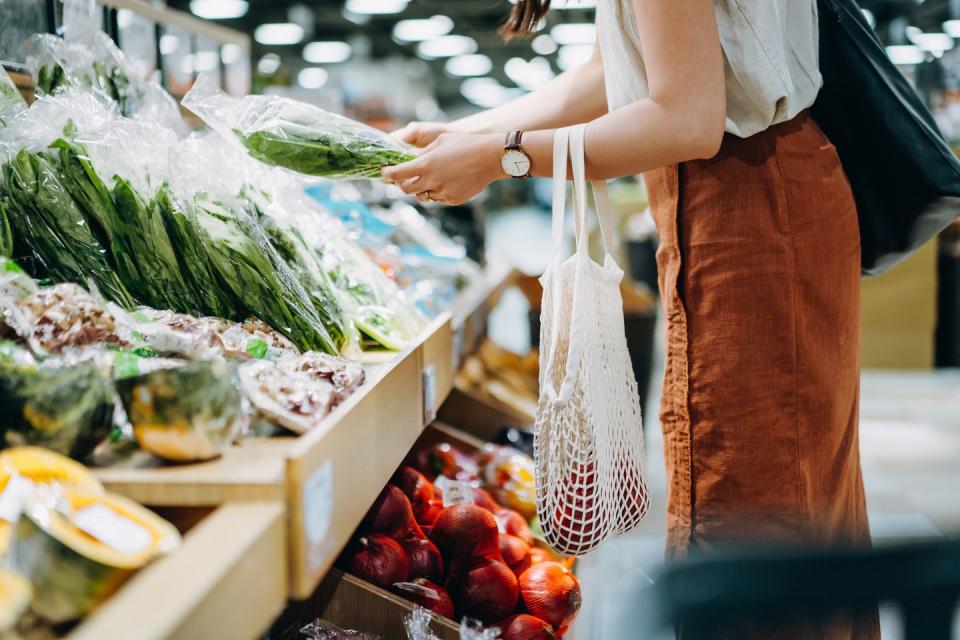Be honest: whose freezer is a mess right now? Here are 10 expert ways to make space

Look, we're very much here for the whole air fryer craze - spurred on as much by the gadget's efficient energy usage (and low running costs) as its ability to make delicious, crispy morsels without the added fat and calories.
But when it comes to saving money, reducing food waste and planning ahead, there's no better kitchen companion than your trusty freezer.
And, let's be honest here, we'll hazard a guess that yours possibly isn't in the smartest-looking shape right now.
While we all have plans to keep on top of what's in there and stay organised, many of us end up shoving food into whatever space we can find and not being 100% sure what we've frozen.
This matters because, while food may last longer in the freezer, it doesn't last forever. Using your freezer efficiently can help you keep track of what's in there - helping slash your grocery spend by removing the need for spontaneous purchases - and use it up in time.
Don't know where to start? We've got easy-to-action tips for you.
1. Organise shelves
Organising your freezer shelves by food type can help you find everything you need quickly and easily. To be super-organised, try labelling each shelf or drawer so that food is stored by category like 'meat' or 'frozen fruit and veg'.
Be sure to date freezer bags or reusable plastic food containers and put food that needs to be eaten soon somewhere you can easily see it, so that you don't forget about it.
If you don't have any freezer bags handy, and you're worried about food sticking together, divide items with baking parchment, foil or freezer paper.
2. Keep it cold
It's vital to keep your freezer at the right temperature: the Food Standards Agency recommends keeping your freezer at -18°C to keep all items thoroughly frozen.
Before freezing, chill foods in the fridge. As a rule of thumb, never place warm or even slightly warm foods in the freezer. If you do, ice crystals can form and it can cause the overall temperature of the food stored in your freezer to rise to unsafe levels.
3. Package well
To make the most of the available space in your freezer, place food in square or rectangular containers. These stack well and take up less space, which is perfect for anyone trying to fit lots of food into their freezer.

Use shallow containers for freezing liquid-based products such as sauces, as they freeze more quickly. When you're freezing liquids, leave a little space to allow for expansion, so don't fill containers right to the top.
Alternatively, use gusseted freezer bags that stand up once filled, or try reusable freezer bags to reduce your single use plastics.
4. Make a list
Set aside a bit of time to create a detailed list of everything in your freezer. It’ll be time-consuming at first, but once you’ve got the list it’s easy to update. Cross out things when you remove them from the freezer and when you place anything in the freezer, add it on to the list.
A freezer list means you’re less likely to forget about things lurking at the back, plus you can easily avoid doubling up on frozen foods when you write your shopping list.

5. Don't waste wine
Not enough wine left in the bottle for another glass but too much to waste? Freeze excess alcohol in your ice cube tray and use for stocks or sauces.
6. Allow air in
A full freezer retains cold better than an empty one. However, be careful not to pack it too full – air must be able to circulate easily in order to maintain the temperature. So, be realistic about
7. Label food
Label products before putting them in the freezer with the date and what they are, so they can be easily identified.
Not sure what to use for your labelling? Get a freezer-safe marker pen to mark your meals clearly.
8. Defrost carefully
Ensure meat, fish or prepared dishes are thoroughly defrosted before cooking or reheating. Defrost food in the fridge overnight to completely thaw it and avoid leaving it at room temperature.
Vegetables and fruit are usually best cooked straight from frozen.
According to the Food Standards Agency large items such as a 6-7kg Christmas turkey can take up to four days to defrost fully in the fridge, so get it out in plenty of time.
9. Maximise space
Vegetables and fruits with a high water content (such as tomatoes and strawberries) may be better puréed before freezing, particularly if that’s what you plan to do with them in the long run. It will also save space in your freezer.
10. Remember the rules
Remember that food can’t live forever in the freezer. Read that again.
Meat should be used after within 3-6 months and bread only lasts 2-3 months. Any longer and the food will still be safe, but the colour, flavour and texture will start to deteriorate.
Small freezer compartments within fridges are less reliable than chest freezers or standalone freezers, so check food often for signs of freezer burn and use up or discard sooner if the food shows signs of deterioration.
Let food cool completely before freezing. If you place it in the freezer when even slightly warm, ice crystals can form and it can keep the overall temperature of the food at unsafe levels.
If you're unsure or the rules around food safety, refer to the NHS guidelines to check your food is safe to eat.
Cut through the noise and get practical, expert advice, home workouts, easy nutrition and more direct to your inbox. Sign up to the WOMEN'S HEALTH NEWSLETTER
You Might Also Like

 Yahoo Sport
Yahoo Sport 





































